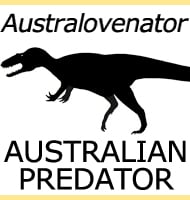Aerosteon
In Depth Aerosteon was a member of Megaraptora, a group of lightly built theropod dinosaurs that are notable for having enlarged claws upon their hands. The name of this group is derived from the misidentification of first member of the group, Megaraptor being misdentified as a dromaeosaurid ‘raptor’ based upon the presence of a single … Read more
